Posts Tagged winter
Tips to Get Gardens Ready for Winter
With the year slowly coming to an end and winter quickly approaching the outdoors can turn into a dull and inhospitable place forcing most people to remain indoors however, for garden and landscape enthusiast alike this time of year is the ideal time to prep gardens, lawns and surrounding landscapes for the upcoming growing season.
Keep Gardens in Shape During Winter
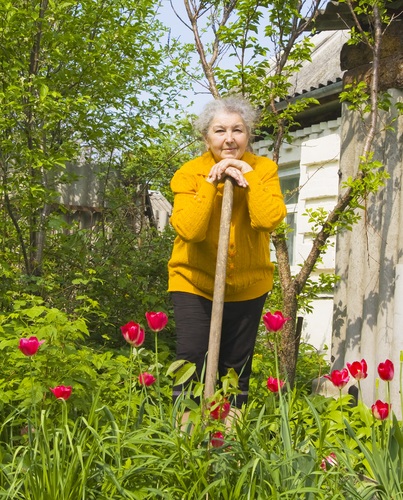
In the fall or just before winter most trees lose their foliage however at this time maintenance practices like pruning or trimming are encouraged during the latter months of the year as during this time of dormancy the majority of hedges, shrubs and trees can be pruned or trimmed without causing damage to the plant or tree.
This practice not only eliminates dead cumbersome branches from trees and plants but it also helps to improve their growth and shape while maintaining the general health of gardens.
As for the multitude of leaves that constantly fall and cover gardens at this time of year making it a practice to regularly clean gardens is extremely important as it allows garden beds and lawns to receive adequate sunlight which helps to promote optimal growth and health.
Another very important factor that gardeners should consider when preparing gardens for winter is the protection of plants from potential damage or destruction. Given the extreme conditions that come along with winter one clever tip that has proven to be an effective approach for protecting gardens during this extreme period is mulching.
Mainly used to help soil to retain moisture, regulate soil temperature and suppress weed growth mulching is also a great way to shield and protect plants against the hostile conditions of winter. Planting beds should be mulched at a depth of 1.5 – 2 inches to ensure plant roots remain the right temperature as well as to offer the right amount of protection from any potential damage.
Contract a Professional Landscaping Service
Not everyone may have the equipment to carry out trimming and pruning effectively and as for large, dead, trees and decayed branches hanging around gardens it’s best to contract trained professionals to manage tasks such as these since decayed trees and branches can pose serious threats of injury. Therefore contracting a professional landscaping service to manage tasks that might require equipment and trained personnel is the safest option.
Need Help with Preparing Your Garden for Winter?
Here at DK Landscaping Inc. we understand how tedious it can be to manage gardens on your own however we like to say that “We like Jungles” and we’d be happy to come in and assist you with all your garden preparations for winter.
We aim to provide the highest quality landscaping and gardening services to all clients. Our services are very affordable and we work with clients to manage any type of surroundings. Give us a call at: 707 217-6508 or visit our website: dklandscaping.com for more information.
Fall into These Horticulture Habits for Winter
Shuttering your garden for the fall is easier than you might think. You probably already know to clean up any debris and uproot weeds that love nothing more than to spread, but there are a few more horticulture steps that can really put you on the right path for a renewal in spring and bounteous summer harvest.
Get Your Garden Cleaned Up
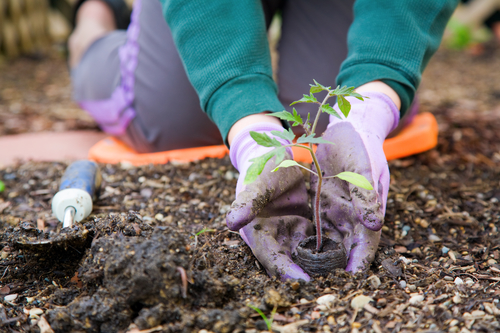
It might be tempting to dust off your knees, climb out of your garden, and let nature take its chilly winter course. The thing to realize is that while that might be easier now, you could be setting yourself up for more work later. Prepping your soil – and perhaps planting a cover crop – and replenishing your mulch can make life so much easier in early spring next year.
You want to remove any weeds you find or decayed plants before your ground gets too cold. A professional landscaping company can help you remove weeds, prune perennials, and even turn your fall leaves into mulch and compost that nourishes your soil year round.
If you’re really strapped for time, though, and you don’t want weeds to grow then put plastic or cardboard over existing weeds and leave that cover on through the winter to keep weeds from spreading. Or call on DK Landscaping and get landscaping experts to clean up your garden in time for winter.
Making a light pass of your garden with a tiller can also clear your garden of insects that plan on overwintering (spending the winter) in your soil. Insects like grubs and beetles want to hunker down and spend the winter in your soil, but these same insects can ruin your plants and screw up your soil!
A Horticulture Essential: Prepping Your Soil for Winter
The plants in your garden are actually more complex than they might look at first glance. When your garden’s soil doesn’t have the nutrients that your plants need to grow to their full potential, they emit stress hormones that can make it easier for nearby insects or diseases to take hold of your garden. That’s obviously not what you want.
Late fall might actually be the best time of the year to call on a company like DK Landscaping to test your soil to make sure that it contains the right kind of nutrients to promote plant growth. DK’s horticulture experts will look to see how much organic matter is in your soil, gauge the level of mineral nutrients in your soil that your plant roots can absorb, and measure levels of potassium and phosphorous.
(Nitrogen, phosphorous, and potassium are your soil’s three main macronutrients. Potassium helps for water retention in your garden and nitrogen and phosphorous ensure that you get early growth and healthy roots.)
That might sound really complicated, but a simple test can tell you a whole lot. Something as simple as adding lime to your soil can help bring your soil’s pH into balance too. Adding lime is also really good to do in late fall because it takes a while for the soil to absorb it. Time is your friend in the winter months when your garden is basically laying fallow.
Leaves are Solid Gold for Your Garden
Once you’ve tested your soil, you’re going to want to apply some kind of mulch (goes on top of soil) or compost (goes into soil). Chopped-up leaves sprinkled over your garden will enrich your soil, improve water retention, and stop weeds dead in their tracks.
DK Landscaping can handle more complex horticulture and help you with regular garden maintenance, irrigation, and general landscaping in fall and throughout the year.
Winter Gardening: How to Maintain a Healthy Garden during Winter
Winter can be a rough time for your garden. From heavy snow to frost forming on the soil, it might seem as if all odds are against your garden. The good thing is that growing a healthy garden during winter is easy as long as you know your way around during winter gardening. If you manage to keep your garden healthy throughout winter, the chances are that it will look even better when spring arrives.
Here are a few insights for caring for your garden throughout winter:
Water Wisely
You need to be careful with the time you water your garden during winter. If you water during the extra cold times of the day, the water might freeze, leading to frost damage. The best time to water your plants would be during the warm times of the day. Since plants tend to absorb water slower during the winter days, and the warmth helps ensure that it flows efficiently through the plant’s system.
Mulch Your Garden
Mulch can not only help to preserve the warmth of the soil but also keeping weeds away. By improving the warmth of the soil, you increase the pace at which water can be absorbed by the plants. It might be wise to use leaves to create mulch, especially after you let them rot since leaf mold discourages the development of weeds. Collect some fallen leaves and layer them over the soil.
Introduce Microclimates into Your Winter Gardening
During winter, you want your garden plants to receive sunlight, but not the cold. This is something that creating a microclimate can help you with. Ideally, this involves creating a greenhouse effect on a smaller scale, and using cold frames can be useful. This will require you to house your garden under a transparent material that will let in some sunlight, but it is hard enough to keep the cold temperature out. Of course, you can always keep these materials away during the hotter months.
Remove Unhealthy Plants
If left to reside alongside the rest of your plants, unhealthy plants can easily spread pests, fungi, and diseases to the rest of your garden. This is the last thing you want for your garden during winter. Get rid of the spent plants. As for any plant that is finished, but is disease-free, uproot it and bury it in your garden. Doing so will revolutionize your winter gardening by introducing organic matter to the soil and improving its general health.
Winter gardening requires a little bit more effort and attention to detail. Show your plants some love during this time, and you can expect them to blossom during the warmer months. Consider the winter gardening tips above to improve the health of your entire garden. Contact us for more gardening tips.
Four Creative Flower Bed Ideas to Get You Going
Creating sensuous textures and adding color to your garden with a flower bed is one of the quickest ways to improve your yard. And when it comes to flower bed ideas, there’s virtually no limit.
Raised flower beds are getting a lot of attention lately because they’re easier to water and maintain, but that’s far from the only option.
Other options are flower beds that encase trees and create a truly picturesque effect, flower beds that line a walkway to a backyard oasis, and tall flower beds filled with azaleas and wisterias.
Flower Beds Encasing Trees
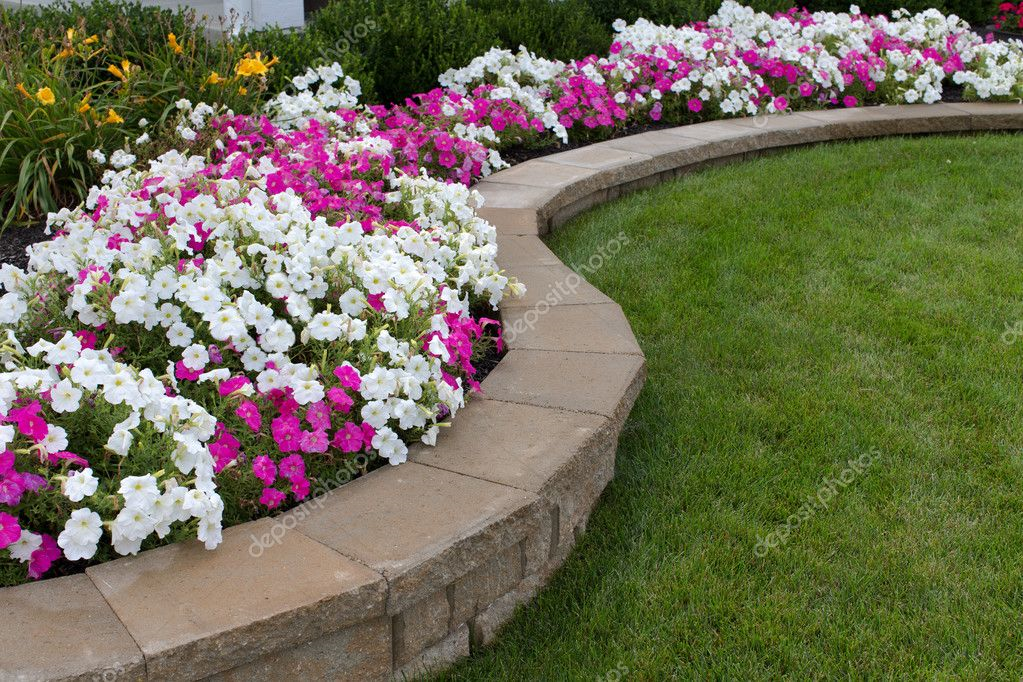
The thing to do when planting flower beds around trees is make sure that you’re selecting the right flowers for your particular region and getting the amount of sunlight versus shading right.
Plants and flowers that are “full sun” are the easiest to work with since they can receive six hours or more of sunshine per day and still be fine.
Yarrow, tickseed, and blanket flowers are all full sun plants that go great around trees. Lavender (purple) and sasha sage (white) pair well together and are both full sun plants. These might well give you the effect you’re looking for.
Circular Flower Beds
If you’re feeling a bit more adventurous, then you might want to consider a few of the flower bed ideas below (including this one!).
Circular flower beds are good if you have a huge tree that you want to draw attention to or a bare spot in your yard that needs a bit more color.
Taking an eclectic approach that gives you a wide palette of color is usually the way to go when it comes to creating a successful circular flower bed.
Bulbs, annuals, and perennials with a nice border flower like garanium can really frame things nicely. Putting something like a bird bath in the center is also an option.
Like these flower bed ideas but feeling overwhelmed with actually pulling them off? Get in touch with a landscaping company that can help you design, build, and maintain your flower bed for years to come.
Flower Beds Along a Walkway
As far as flower bed ideas go, this one’s right up there in popularity with raised flower beds and flower beds around trees.
Flower beds lining your walkway can significantly increase your curb appeal as a homeowner and work well with condos and receptions as well.
In terms of design, planting decorative flowers as a border along your walkway is said to soften the sameness and artificiality of concrete.
A line of flowers adds an unexpected splash of color in an unlikely, though not unwelcome, place.
Landscaping and design experts say to go with flowers that are hardy yet vibrant like mahogany bugleweed (purple) or red ruby.
A landscaping company can plan, edge, and till around your walkway to get things started on the right foot. Composting, mounding the soil, and actually planting the flowers comes next.
Here too landscapers can provide regular maintenance and put your flower bed and lawn on the irrigation and aeration schedule that both need to flourish and bring your outdoor landscape into full color.
Slanted Flower Beds
Slanted flower beds are one of those creative flower bed ideas that’s certainly not right for everyone but could be perfect for many people.
If your front yard is pitched, for instance, a landscaping team can help you raise your dirt bed to level and create a retaining wall that maximizes your flowers’ blooms while minimizing soil compaction.
Grasses and succulents are smart choices for sloped gardens. Contact a professional landscaper to make it happen!
Finally…Here are the Elements of Amazing Garden Design!
Garden design is about getting the most out of your outdoor space and creating an inviting backdrop for family, friends, and neighbors.
You obviously want to get to the point of enjoying your outdoor landscape as soon as possible, but a lot of work goes in to getting things just right.
Garden design revolves around having the right location, soil conditions, boundaries, and surfaces to work around. That said, the elements of garden design can’t be overstated.
The Elements and Location of Your Garden

There are two basic elements of great garden design – something known as hard elements (i.e., relatively immovable design details like paths, walls, lounge chairs, and decks) and the actual plants and flowers that adorn your garden.
Hard landscape elements can include beautiful additions to your outdoor landscape like a koi pond stocked with fish or a stone path that gradually opens up to a breathtaking garden rich with flowers and color.
These two basic elements of garden design – the hard elements and the actual plants you use – dynamically work together to bring out the best in your garden.
Creating a Powerful Effect
The kind of paving that you use leading up to your garden can have a dramatic effect on the overall impact of your garden. Grey stone with purple lilac, for instance, can create a captivating French country look that really inspires.
On the other hand, working with a professional landscaping company to curate a manicured lawn and lush garden around black paving can create a modern look that’s both classy and inviting.
A professional landscaper can cut through all of the guesswork and help you determine what the best garden design for your home would be.
The best garden design for you is determined by your design preferences, of course, but also strongly suggested by your climate zone and any microclimates in your area.
Your particular climate can affect whether you’re able to plant annuals or whether hardier perennials would be a better choice. Your climate also impacts things like seeding, blooming, aeration, irrigation, and the soil foundation that fundamentally make a great garden.
The Soil, Boundaries, and Surfaces of Garden Design
A lot of homeowners want to fast forward ahead to enjoying a garden lush with roses, lilacs, tulips, and dahlias…and those are all beautiful. The foundation for all of those, though, is your garden’s soil.
There’s a process that a professional landscaping company can help you with known as amendment, which is where nutrients are added to your subsoil and topsoil to ensure that it provides a foundation for healthy plant and flower growth.
A landscaping company can use the right soil structure – whether that’s loam, silt, or some amount of clay – for your garden’s flowers, acidity levels, and your particular climate.
Boundaries and Surfaces for Framing
Having the right boundaries (e.g., a line of hedges and nice, white fence) and surfaces directly bordering your garden (e.g., woodchips, straw, or pebbles) can open up the possibilities with your garden design.
Using structural plants to frame the sides of your garden is a staple of good garden design as well. Boxwood and bay laurel can be planted year round and are relatively easy to maintain.
Evergreen shrubs are another popular border. The most popular border for most gardens is your lawn.
Having your lawn maintained or shaped and maintained around your new garden (lawns can be square, circle, or oblong-shaped) gets everything off on the right foot.
Professional landscapers can walk you through your options when it comes to garden design and picking the best aesthetic and practical features for your new garden. Contact us for more information.
Winter Plants – Part 2
During the winter season creatures prefer to hibernate and wait until nature affords them the opportunity to venture out into warmer conditions. There are no different to us humans as we seek to make our homes warm and comfortable during the dreaded winter weather. Your garden is certainly apart of your home and you should do all in your power to ensure it can handle winter’s fury and look its best. Vibrantly colored winter plants or even winter vegetables can enhance the life of a damp gloomy landscape.
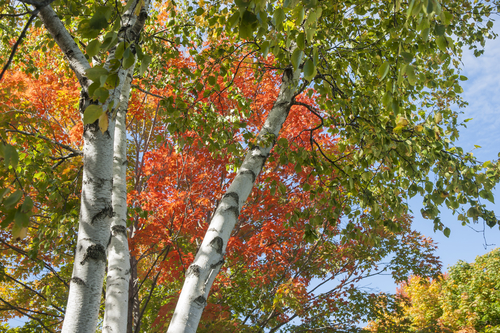
Know Your Winter Plants
An uncommon but very fascinating winter plant is Harry Lauder’s Walking Stick or Corkscrew Hazel. Even though, this shrub flowers in the spring season, it is a beautiful winter plant. This is due to its coiled and zigzagged branches. This plant tends to grow better in a fusion of bright sunlight and shade. The branches will need frequent trimming to preserve its attractive appearance however when they fall they can resemble an overgrown untidy mesh of wood.
The Paper Birch tree displays its gorgeous yellow leaves in autumn. However, when it gets extremely cold, its white bark provides a sensational difference to a backdrop of evergreens. Frequently they are used during the Christmas holidays in many gardens. The paper birch tree should be planted in deep holes with mulch to keep it damp. Partial sunlight will be essential for this plant.
The Heather plant is another suitable winter plant. It flourishes all year round and provides attractive flowers in summer and fall. It’s rich foliage provides a fascinating difference when compared to other winter plants. You should plant these in winter with mulch in an area that obtains excellent sunlight.
Holly has always been linked to winter and there are 400 assortments to select from ranging from small to gigantic trees up to 80 feet. There are various types of the holly plant to fit every garden and winter scenery. Its vibrant berries and dense foliage make it very eye-catching.
Hellebore is another winter plant that can be obtained in a fusion of selections. When flourishing it has a cup like shape and they come in an array of colors making it easy to find a color that best suits your winter garden. This plant flourishes better in total shade. Contact us for more information on how you can make create the perfect winter landscape.
Winter Plants – Part 1
Nature provides numerous varieties of winter plants that flourish in cold temperatures. There are winter plants that will flourish even in snowfall and there are others that can mirror their vibrant colors from the icicles hanging from your home.
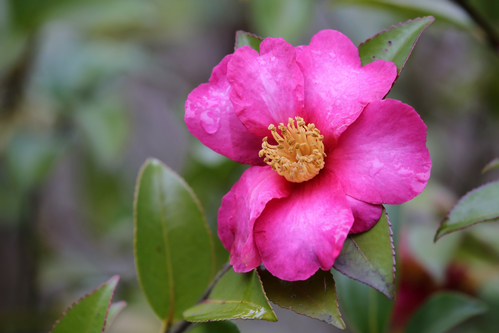
Winter Plants For A Breath Taking Scenery
One of the well-liked winter plants is the Camellia. This evergreen flourish from fall to early spring. With its brightly colored rose like flowers this plant provides a breathtaking difference to a sombre winter scenery. Camellia should be sowed in an area that have some sun but not too much
The winter-berry which is related to the holly and loses its leaves in fall is a great plant to have this time of year. You and your loved ones can enjoy the vibrant red berries that come into their own. The berries attract the birds during this time which is a sight to see and the birds will be happy for your blessings as well. You must plant the seeds during the fall in a small frame, then you can transplant them to fertile damp soil in the spring. However it is a slow growing winter plant, with its germination taking about 2 to 3 years.
Paper Maple has ringlets of copper colored bark flaking off all over and this constructs a pleasurable image both on the plant and while the leaves lay on the ground in all their splendor. During fall the green leaves change into a fascinating cinnamon shade and the plant grows in sunlight perfectly.
Red Twig Dogwood is an old-time golden boy as the color of the plant is sustained all year round. The boldness of the plant’s color relies on the sunlight it obtains. This is another incredible addition to consider in your garden during winter.
Firethorn is lasting and it has an appealing view all year. It has little bunches of glistening white flowers in spring and vibrant shiny green leaves the rest of the year. The little pea like berries can be either orange or yellow in color and these can survive until long after fall is over. The seeds should be sowed in the fall in a cold frame then transplanted to properly drained fertile earth in the spring.
If you want the best in lawn maintenance and advice contact us as DK landscaping. Our team of experts will help you give your garden the nutrients and the proper care it needs to survive and remain lush.
Winter Services for Property and Landscape Maintenance
The cold temperatures and dry air can prove to be quite the burden on your lawn and landscaping. Property owners can preserve the integrity of their lawn and landscaping by reaching out to our lawn and landscape maintenance professionals for expert treatment. Ally with DK Landscaping and we will make sure your property maintains its beauty throughout the winter, spring, summer and fall.
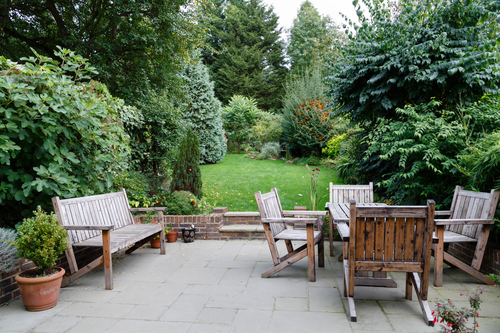
Winter Lawns and Landscaping Maintenance
Your front and back lawns are not a lost cause during the winter months. Though the frigid temperatures will take a toll on all forms of life, it is certainly possible to maintain a lovely lawn, shrubs, flowers, trees and other greenery during the coldest portion of the year.
DK Landscaping knows exactly how to treat lawns during the winter. We make use of a unique winter fertilizer that keeps lawns looking fantastic even when the temperatures dip down toward the freezing mark. Our special fertilizer enhances grass so it does not require an abundance of water. It also stimulate robust root development that ultimately preserves the integrity of your grass across the years to come. This fertilizer even bolsters your lawn’s ability to combat disease and withstand heavy foot traffic.
Ally with DK Landscaping for winter lawn and landscaping maintenance and you will notice a considerable difference in your property’s beauty. We know exactly which trees, shrubs and flowers should be pruned during the winter months. Furthermore, our team understands the extent to which each type of shrub and flower should be pruned.
As an example, we prune certain roses back by upwards of 80 percent during the winter months. Certain types of grass such as ornamental grasses require 90 percent pruning during the coldest months of the year. This is the type of attention to detail that separates your lawn’s health and beauty from the pack. Put your faith in DK Landscaping to sweat the small stuff and you will enjoy the benefits in the form of glorious lawn and landscaping that holds its beauty far into the future.
Water Preservation
The winter months can be brutally dry. You might be tempted to water your grass, trees, flowers and shrubs quite frequently during this time of the year. Yet you don’t want to run up an expensive water bill or spend your limited free time outdoors in the bone chilling cold with a hose in your hands! Your best course of action is to turn to the irrigation experts at DK Landscaping.
We know all the best methods to disperse water in a highly efficient manner. We also perform water saving landscape design known as “xeriscape“. Homeowners and commercial property owners can both benefit from the efficient distribution of water across lawn and landscaping. Our goal is to conserve water, save you plenty of money and keep your lawn in tip-top shape.
In addition to water saving landscape design techniques, we also make use of native plants acclimated to the dry air, runoff prevention methods, drip irrigation, MP rotators and smart evapotranspiration timers. The end result is a stunning lawn and landscaping that requires substantially less water than previously needed.
Ask any of our current or former customers about our water conservation design methods and equipment and they will testify to the legitimacy of these strategies.
Let our landscape maintenance experts take a look at your property and we’ll start brainstorming ways to boost its aesthetic. Whether you are looking for a beautifully green lawn or elegant landscaping, DK Landscaping can make it happen. Reach out to us to schedule an initial consultation.
Winter Gardening: Growing Vegetables
Though snow may lie deep in drifts outside your window, this is the ideal time to get started with this year’s winter gardening program. There are many garden tasks that can be done now, while there is ample time to plan, research, and begin gathering materials. Some gardeners consider these winter chores to be the most enjoyable parts of gardening. Tasks can be accomplished comfortably from your armchair as the garden takes shape in your imagination, where it is always lush, abundant, and of course free of weeds.
Winter Gardening Advice
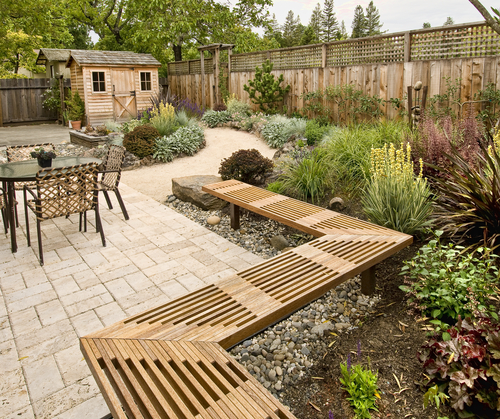
In midwinter, before the growing season gets underway you have time to organize yourself so you can accomplish everything you need to do from now until your garden is planted. This is the time to make rough plans which can be refined and modified as you go along. So while the birds twitter around their feeders and the forecast is for more snow, grab a stack of seed catalogs, some paper, and a pencil, and settle into a comfortable chair and plan your dream garden.
It is helpful at this early stage to make some key decisions about your garden. You need to compile the list of vegetables that you plan to grow. You must also decide which vegetables you will start from seed inside, which you’ll sow as seed directly into your garden, and which you’ll purchase as seedlings from a nursery. Additionally, you should list supplies you’ll need for cowing seedlings indoors, and begin to gather these items. It is also helpful to start composing a rough sketch of your garden layout. Finally, you should draw up a calendar of garden tasks to do to help you stay on schedule as the season progresses.
Start by thinking about which vegetables you’d like to grow this year. If you’ve had a vegetable garden before you should consider what grew well for you before and what failed. Certainly include any of your old favorites, those vegetables that are easy to grow and can be relied upon to produce abundantly. There may be new vegetables you’d like to try or new varieties of your old favorites that you would like to experiment with. Consider quantity too. Did you have as much as you wanted of everything last year? Was there something that you could not give away fast enough such as all those zucchinis? Perhaps there was something which you enjoyed eating but took up too much space?
If you haven’t grown vegetables before, a good way to start putting a list together is simply to consider what your family enjoys eating. You’ll want to think about vegetables that you’d like to provide fresh from your garden over the summer, as well as considering any vegetables that you’d like to can, freeze, or store for fall and winter eating. If this is your first vegetable garden it’s wise to start small. A small kitchen garden of ten or twenty square feet planted with a handful of vegetables and herbs will keep you fairly busy with garden tasks, supplement your family’s food, and provide you with good gardening experience to go forward.
Don’t forget to take your growing zone into consideration when choosing vegetables to grow. If you are not sure which zone you live in, you can readily find out in almost any gardening book or online. Do some research on gardening in your region to find out how long your growing season is, when planting time starts, and what types of vegetables do best where you live. Contact us for more information.
Winter Lawn Care Is Essential
Winter lawn care is no less as important as summer lawn care and maintenance. Your winter lawn care to-do list wouldn’t include activities such as trimming, weeding and watering however, care is important if you want your lawn to maintain its healthiness during the upcoming months. Depending on the location of your home you will have to determine the best plants to grow and maintenance methods to use in order to achieve this. If your lawn has weeds to spot-treat you can comply with these winter lawn care techniques.
Winter Lawn Care Techniques
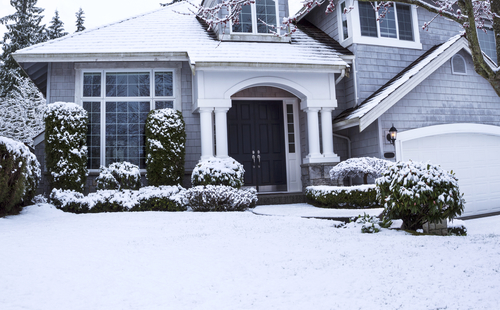
- Firstly, it is important to continue trimming your lawn even during the winter season. Note however, that there are several winter weeds that can’t endure frequent trimming and can die.
- Place a bag attachment onto your mower when trimming in order to capture seeds and prevent germination. In addition consider administering pre-emergent herbicide in the fall.
- Stop walking on your frozen lawn! Continuous walking or driving over a frozen lawn can kill its turfgrass crowns, which can create spring bare spots.
- If you can’t get all the autumn leaves eliminated before snowfall then not to worry as there is a solution for this. If the soil is damp, level it out carefully, as grass can pull up effortlessly. If you leave leaves on the grass during winter it can kill turf crowns. Moreover, they can lead to snow mold which can devastate your entire lawn.
Other Important Facts
Beware of vole trails that can be present in your lawn after snow fall. These mouse-like small creatures can be in both rural and suburban lawns. An abundant covering of snow on your lawn supply voles with the cover needed to devour grass roots in open lawn. this helps them to remain hidden from predators. As the snow liquefies their superficial runways become visible along the lawn veneer. The runways look like a tunnel without a top and soon as the snow softens you should trim your grass to prevent these critters from inhabiting your lawn.
If your lawn is wholesome you can leave out the grass seed. Another way to tackle the intrusion of voles is to obtain an outdoor cat. Contact us for more information and to inquire about our lawn care services.





